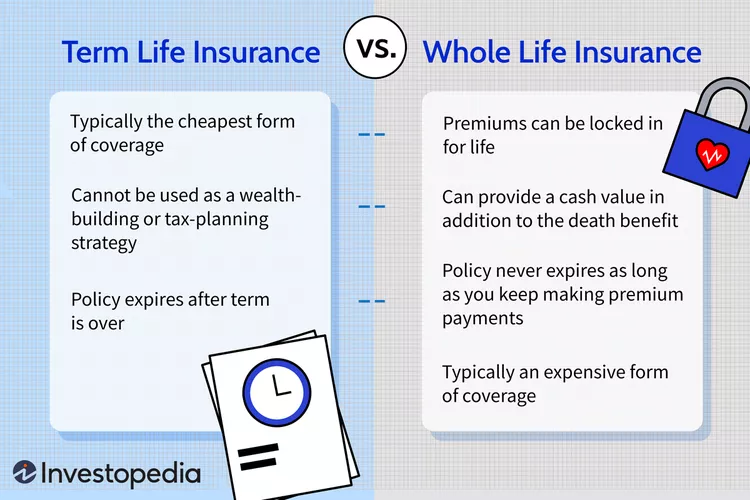Long-Term Care Insurance: Why You Should Plan for the Future Today
Long-term care insurance is a specialized type of insurance designed to cover the costs associated with long-term care services. This includes a variety of services that assist individuals who are unable to perform basic daily activities due to aging, chronic illness, or disability. In an era where life expectancy is increasing, planning for long-term care is becoming increasingly important. Statistics show that nearly 70% of people over the age of 65 will require some form of long-term care in their lifetime.
2. Understanding Long-Term Care
Long-term care involves a range of services that support personal care needs for individuals who have chronic health issues or disabilities. Unlike traditional health insurance, which typically covers short-term medical care, long-term care insurance is aimed at providing coverage for extended periods of assistance. This can include services such as help with daily activities like bathing, dressing, and eating.
Not everyone will need long-term care, but those at higher risk include older adults, people with chronic health conditions, and those with a family history of needing long-term care services.
3. Types of Long-Term Care Services
Long-term care services can be delivered in various settings, including:
- Home Health Care: Professional services provided in the home, including nursing and therapy.
- Assisted Living Facilities: Housing for individuals who need help with daily activities but do not require 24-hour care.
- Nursing Homes: Facilities providing comprehensive care for individuals with serious health issues or disabilities.
- Adult Day Care Centers: Community-based programs that provide social and health services during the day.
- Hospice Care: Care for individuals with terminal illnesses, focusing on comfort and support for patients and their families.
- Community-Based Services: Programs that support independent living, such as meal delivery and transportation services.
4. Eligibility for Long-Term Care Insurance
When considering long-term care insurance, eligibility can be influenced by factors like age and health status. Insurers typically underwrite policies based on an applicant’s health history, which can impact premiums and coverage options. Many insurers have specific criteria regarding pre-existing conditions and may impose waiting periods before coverage begins.
5. Benefits of Long-Term Care Insurance
Long-term care insurance offers several benefits, including:
- Financial Security: It provides a safety net against the high costs of long-term care.
- Peace of Mind: Knowing that you have coverage in place can relieve stress and anxiety.
- Protection of Assets: Insurance helps to protect your savings and assets from being depleted by long-term care costs.
- Choice and Control: Policyholders have more options for care settings and providers.
- Family Support: It alleviates the burden on family members who might otherwise need to provide care.
6. Costs of Long-Term Care
The costs associated with long-term care vary significantly based on the type of service and location. For instance, in the USA, the average annual cost for a nursing home can exceed $100,000, while in-home care may range from $20 to $50 per hour. Factors such as the level of care required, geographical location, and the specific provider can greatly influence overall costs.
7. Funding Long-Term Care
Funding long-term care can be approached through various means:
- Long-Term Care Insurance Policies: These are specifically designed to cover the costs of long-term care.
- Government Programs: Medicaid provides assistance for low-income individuals, while Medicare offers limited coverage.
- Personal Savings and Investments: Many individuals use their savings to pay for care.
- Hybrid Policies: Some insurance products combine life insurance with long-term care benefits.
8. When to Buy Long-Term Care Insurance
The ideal time to purchase long-term care insurance is typically between the ages of 50 and 65, when premiums are generally lower, and individuals are more likely to qualify for coverage. It’s important to evaluate your own risk factors and financial situation when making this decision.
9. Choosing the Right Long-Term Care Insurance Policy
When selecting a long-term care insurance policy, consider the following features:
- Daily Benefit Amount: The maximum amount the policy will pay per day.
- Benefit Period: The length of time the policy will pay benefits.
- Elimination Period: The waiting period before benefits begin.
- Inflation Protection: Options for increasing benefits over time to keep pace with rising costs.
Be aware of common exclusions and limitations, and make sure to read the policy terms carefully.
10. Challenges in Long-Term Care Planning
Despite the clear benefits, many people face challenges when planning for long-term care. Misconceptions about coverage, emotional barriers related to aging, and the difficulty of having conversations with family members can hinder effective planning. It’s essential to overcome these obstacles to ensure that appropriate plans are in place.
11. Real-Life Case Studies
- Case Study 1: An individual who planned ahead with long-term care insurance was able to access high-quality home care services, maintaining their independence and quality of life during their later years.
- Case Study 2: A family that did not have long-term care insurance faced financial hardship after a loved one required extensive care, emphasizing the importance of early planning.
12. Expert Opinions on Long-Term Care Planning
Financial advisors often recommend starting long-term care planning early. Insurance experts stress the importance of understanding the policy’s nuances and aligning it with personal and financial goals. Health care professionals highlight the need for open discussions among family members to address care preferences and expectations.
13. Conclusion
Planning for long-term care is an essential component of financial and health planning. With the likelihood of needing long-term care increasing, securing insurance coverage is a proactive step toward ensuring a comfortable future. By considering your options and making informed decisions today, you can protect your assets, maintain control over your care choices, and relieve your family of potential burdens.
Call to Action
Don’t wait until it’s too late. Start your long-term care planning today by consulting with a financial advisor or insurance expert to explore your options.







